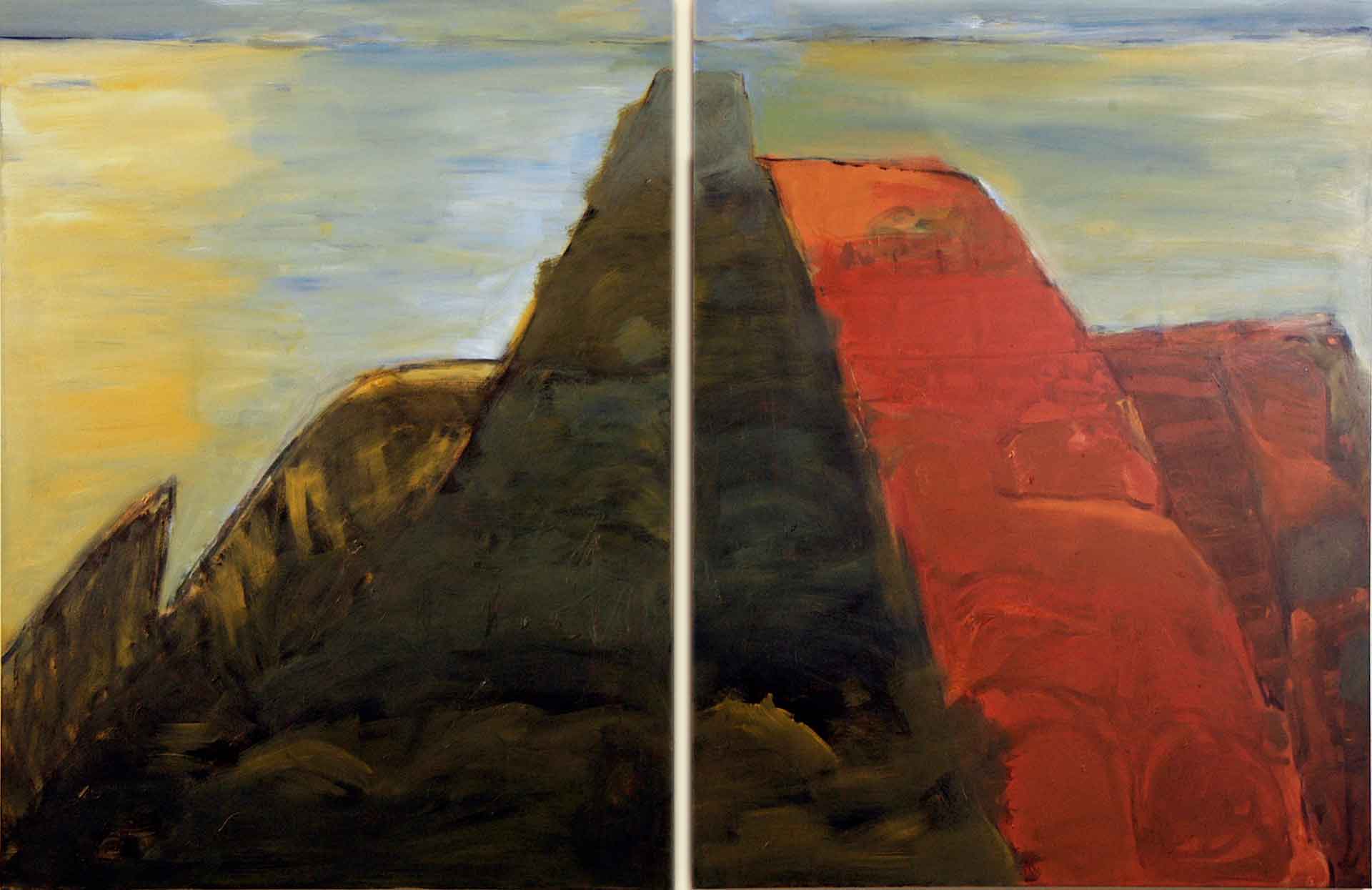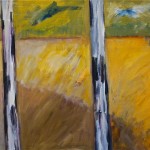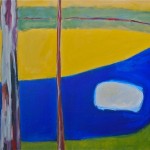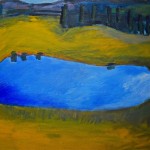Jay’s Exhibition in New York.
Jay’s Exhibition was hung on the 07/11/14 and opened on the 09/11/14 at the Artifact Gallery, 84 Orchard Street, Lower East Side New York. The Exhibition was called Dams, Water Holes and Billabongs, and ran 3 weeks.
THE VISUAL JOURNEYS OF JAY PEARSE
by John Austin, an art critic based in Manhattan
In the visual worlds of Jay Pearse, the artist has nurtured three essential qualities that have contributed to the making of significant form throughout her career. Each of these aspects, in a sense, flows into and reinforces the other and allows its companion qualities to take root in the work. Each of the three conditions, in effect, co-exists and is part of the very fabric of art making that the artist is engaged in.
The first quality that is immediately evident in the artist’s work is a result of the artist’s imposing capacity to regulate the forms and compositions in her paintings so as to inspire a quality of “lived presence” that permeates her work. This is that essential vitality which makes each work come alive for the viewer.
The second is the condition of non-finito, the purposeful implication that there is no beginning and no sense of closure. This permeable sense of timelessness which is so evident in the artist’s work allows her, as Charles Baudelaire describes the task of all great artists, to “distill the eternal from the transitory”. In her current exhibition of paintings Dams, Waterholes & Billabongs Pearse allows geometric imagery related to the world of nature to give an initial sense of coherency and control.
The third aspect of her art that gives it its authoritative character is the evident conjunction of opposites which is allowed to become manifest. This is a pre-condition of the first two aspects described above. This coniunctio oppositorum, as Carl Jung describes it in his “Symbols of Transformation”, allows a further condition to unfold, an enantiodromia, that is, a conversion of something into its opposite. The artist makes evident use of her process which is then superimposed with a set of conscious delineations which complete each work in order to make paintings that contain (seemingly) opposite energies, which, once combined, produce remarkably individuated images.
It is quite clear that the artist has involved herself with the careful scrutiny of the world of nature around her. Hours of meticulous observation have evidently been taken in for the artist to capture nature from various vantage points, take fronts, mountain ravines, hillsides, flowing creeks. Her image-making involves a fragile synthesis; it draws together her powers of observation as well as those of her singular intelligence. Together they re-construct the world for us through the creative action of her imagination.
What becomes abundantly clear in looking, as a whole, on Jay Pearse’s artworks, is the artist’s indispensable capacity to attain a certain emotional involvement. These include attempts at defining a sense of visual memory and of the self. Resisting completely sentimentalizing components in her work for the benefit of enlarging the scope of her authenticating journey into creativity. Jay Pearse’s abstract landscapes grapple with divided loyalties. Stylistically speaking, Andre Gide’s dictum “the struggle between classicism and romanticism takes place within every mind …” also helps us to understand the artist’s keen gamesmanship. The forces of positive ambiguity surge through the artist’s work; the result is visual traces of integrative wholeness that are nothing short of inspiring and nothing less than beautiful to behold.



